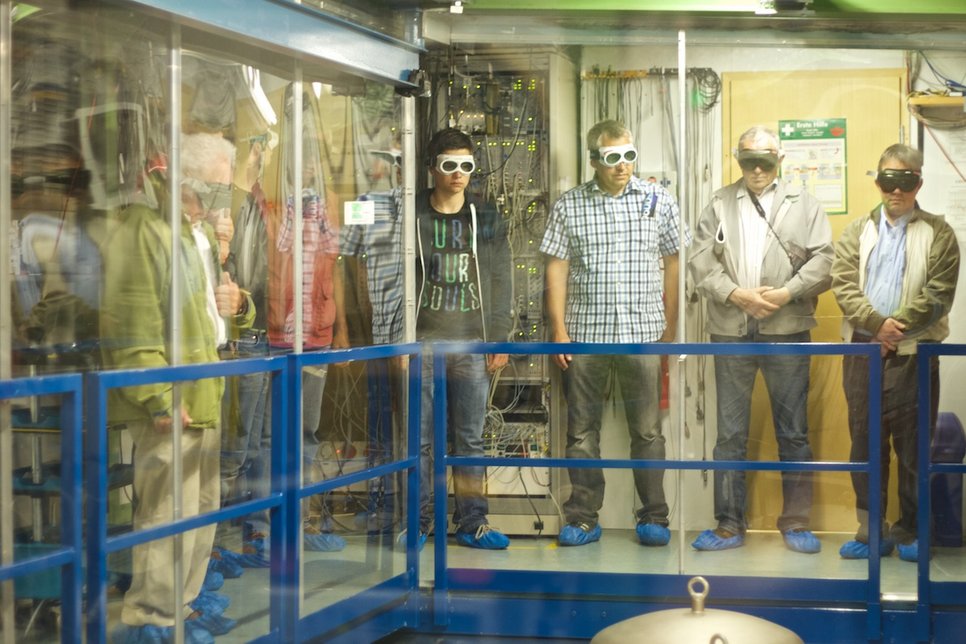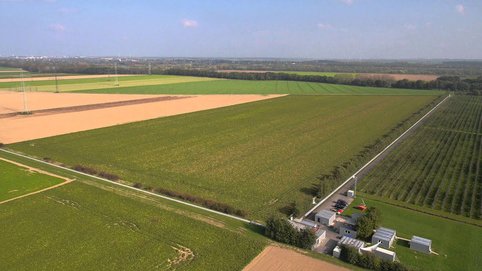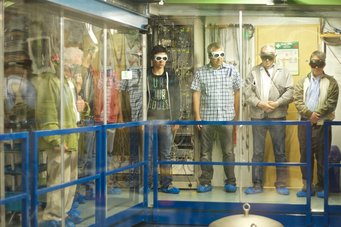Open Day at GEO600
Visit the gravitational waves detector near Sarstedt
On Saturday, 11 July 2015, the Albert Einstein Institute (AEI) Hannover is extending an invitation to visit the Anglo-German gravitational waves detector GEO600 near Sarstedt. Between 11 a.m. and 5 p.m. AEI scientists will inform visitors at the detector site about the search for gravitational waves, which are expected to open a completely new window to the universe, and the existence of which was predicted by Albert Einstein in 1916.
New astronomy
Humankind has been gazing into the starry sky since time immemorial – and for centuries has been constructing increasingly more powerful telescopes. However, in the current scientific context, this only allows for the observation of a fraction of our universe, as countless objects are hidden or fundamentally invisible.
In coming years, the first direct measurement of gravitational waves is expected to open up a new window upon the invisible, “dark” side of the universe. To this effect, GEO600 will play a major role, as here innovative technologies are being developed and tested for detecting gravitational waves. These are of decisive importance for the advanced LIGO detectors in the USA.
Gravitational waves – Einstein’s prediction from almost 100 years ago
An important part of Einstein’s theory is the existence of gravitational waves – tiny ripples in space-time – which he predicted back in 1916. These ripples occur in major cosmic events, such as star explosions, or when compact star remnants merge with one another. They compress and expand space and thus cause tiny relative length changes which – similar to sound waves in the air – represent the sound of the universe to a certain extent.
The GEO600 scientists are seeking to detect these ripples in space with the help of a laser interferometer that very precisely compares two vertically running laser light beams with each other. Even strong gravitational waves can only change the arm length by a fraction of the diameter of an atomic nucleus – which is how precise the measurement of the GEO600 already is today.
Cutting-edge research at firsthand

At Open Day on 11 July 2015, visitors will be treated, between 11 a.m. and 5 p.m., to firsthand information focussing on the basic research and daily goings-on at the gravitational wave detector GEO600. Optional guided tours of the detector premises will provide insight into the heart of the highly sensitive measurement facility. The event will be rounded off with exhibits, short talks and brief discussions with scientists.
GEO600 is jointly operated by the Max Planck Institute for Gravitational Physics in Hannover, the Leibniz Universität Hannover and research groups at the Universities of Cardiff and Glasgow. It is funded by the German Federal Ministry of Education and Research, the Federal State of Lower Saxony, the Max Planck Society, the British Science & Technology Facilities Council and the Volkswagen Foundation.
Getting there by bike
The GEO600 premises are situated to the south of the Leine River and can be ideally reached by taking a slight detour from the “Grüner Ring” cycling route. A visit to GEO600 is best combined with a bike ride, as you can cycle directly to the central building of the GEO600. A bike map has been provided on the right column of this page for orientation purposes.
Travelling from Hannover by car and where to park
By car: Take the B6 (Messeschnellweg) southbound and take a right at “Sarstedt/Heisede”. Turn right in the direction of Heisede, then left at “Schulenburg/Ruthe”. In Ruthe, turn right. After the Leine crossing, turn right at the EXPO sign (or at the white sign for “Universität Hannover/Versuchsgelände” or the green sign for “Schäferberg”).
When travelling by car, please use the car park at the Lehr- und Forschungsgut Ruthe at the University of Veterinary Medicine Hannover (Tierärztliche Hochschule Hannover). You can park here at the manor house (see the map on the right) or at the poultry houses (located further down the road). From here, it is a short walk of about a kilometre to the central building of the gravitational wave observatory along the 600-metre laser measuring circuit of GEO600. You will find information boards along the path.

